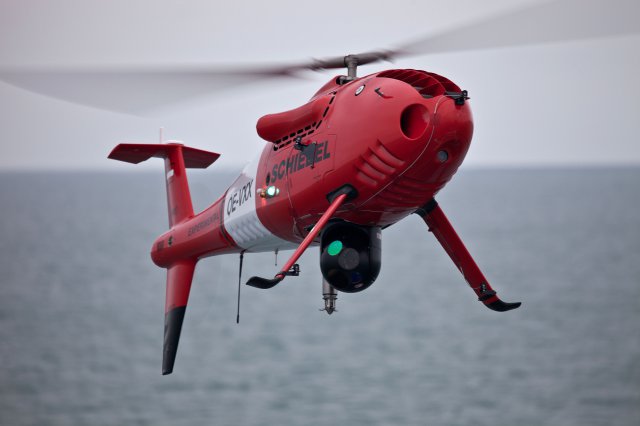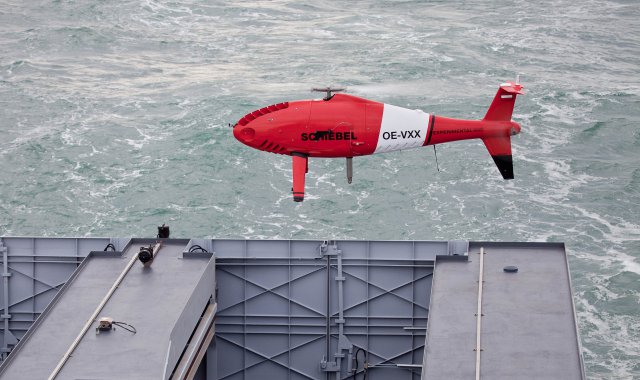‘s CAMCOPTER S-100 successfully completed a series of flights and trials onboard the new Gowind class OPV (Offshore Patrol Vessel), L’ADROIT at the beginning of November, under the command and control of the French Navy.
The L’ADROIT, built by DCNS and handed over to the French Navy in October 2011, is believed to be the first ship ever to be specifically designed to operate unmanned aircraft and has been fitted out to operate the maritime proven CAMCOPTER S-100. Thanks to its modular system architecture, the unmanned helicopter could be easily managed.
“With the unmanned airborne system it is possible to gather information without tiring the crew and without exposing the crew towards an enemy and / or bacteriological and / or chemical hazards or also to act as communication relay.” said DCNS OPV Manager Mr. Denis Menage.
During the four days of operation in the Bay of Biscay, the CAMCOPTER carried out eleven flights and 89 deck landings using a harpoon developed by Schiebel. As part of the trials, the S-100 used its electro-optical and infrared sensors to identify exercise potential threats such as small boats. It was shown that the UAS significantly increases the capability of the ship and the missions conducted during the trials demonstrated its high potential for surveillance, harbour and costal patrol, environmental protection, intelligence gathering, drug interdiction, anti-piracy tasks, as well as supporting search & rescue operations.
“This versatile and very capable UAS can fly a complex mission as planned, without any direct interaction from the operator – it is fully automatic. It’s positioning systems (a combination of GPS and inertial measurement) guarantee precise navigation and stability, necessary conditions for the accurate landing on a moving platform at sea.” a naval spokesman added.”We believe that embarking a tactical rotary UAS such as the CAMCOPTER S-100 onboard such a ship will provide a step-change in its surveillance and reconnaissance capability in the future. The missions conducted during these trials aptly illustrate this enormous potential. Given the fact that many Navies seem to be focusing more on procuring smaller ships for future operations, coupled with the fact that indigenous manned helicopters are often too expensive, opens the door for UAS, such as the S-100. This potential capability gap in terms of intelligence, surveillance and reconnaissance(ISR) is where the S-100 fits in.” commented Neil Hunter, Sales Director for Schiebel and retired Naval Commander.
Source: Press Release


